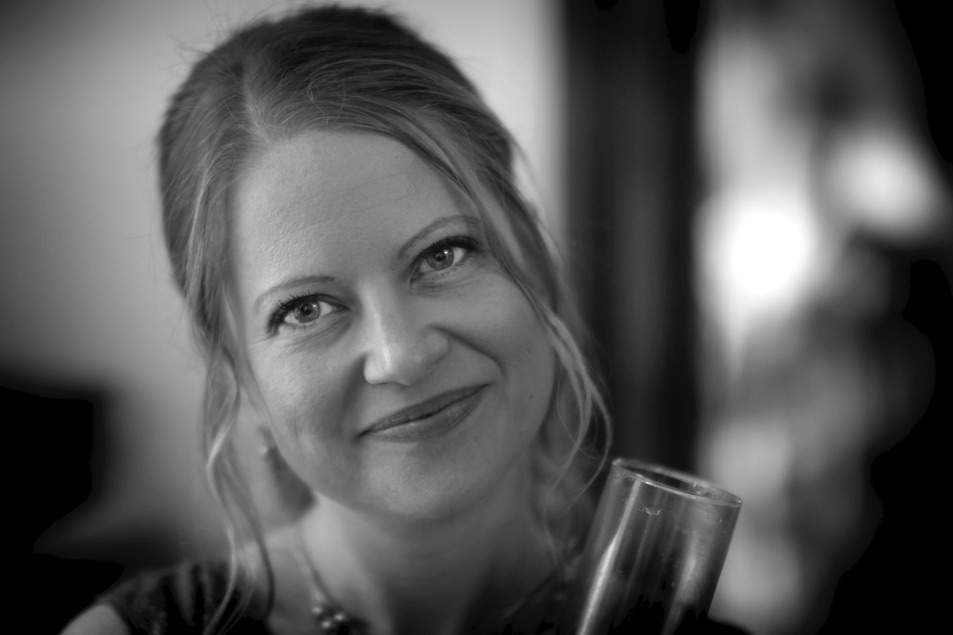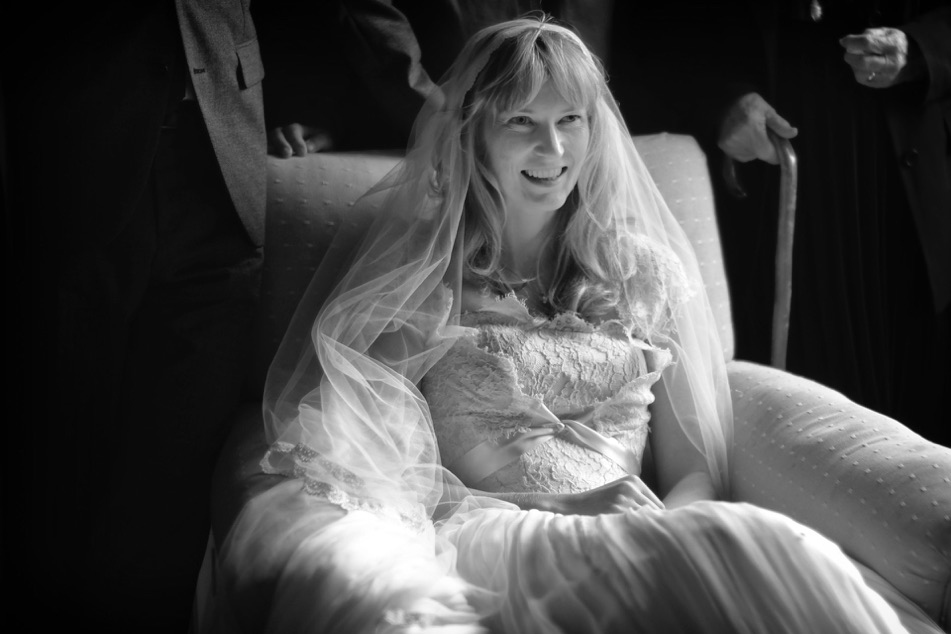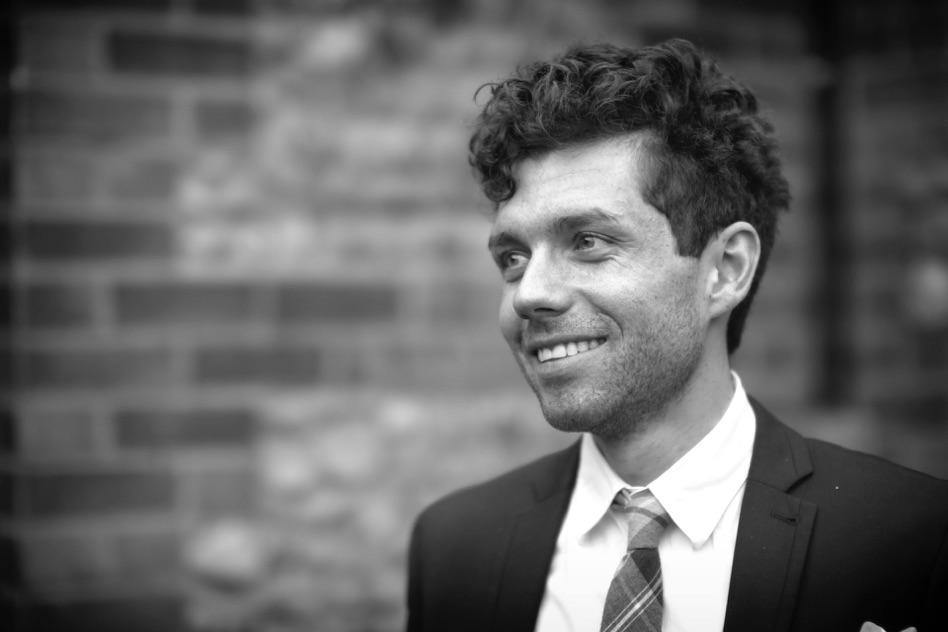Using Manual Focus Lenses on the LeicaT

The Ultimate Test
Having got to this point I thought I should try and work out a real test to see whether my instinct was right, and that focus assistance was only useful on a tripod. More to the point, that it was possible to use the EVF to focus without zooming in, and without focus peaking.
So, it had to be a wedding - the real test of any camera / photographer partnership.
We had been asked to the wedding of one of our eldest son’s very best friends, in fact, Silas was to be the best man. It was a lovely and informal humanist wedding at a country location, and there was a fine photographer employed to record the event. So I could afford to take the chance on complete failure.
Which lens to use? well, if it was to be a proper challenge, then it need to be a difficult one. The 50mm Noctilux was the obvious answer, and as it was a dull day, it was possible to shoot wide open at the maximum aperture of f0.95. So that was what I did; I shot the whole wedding with the Leica T and the Leica 50mm Noctilux M wide open (effectively 75mm at f.0.95) . I took around 600 images during the day, all of them focused using just the EVF, with exposure compensation on the left dial, so no focus assistance at all.
Of course, if I’d been responsible for the wedding photos I wouldn’t have dreamt of doing it like this, but actually the results are fine, interesting and different - obviously there are some out of focus shots, but there are always out of focus shots when you shoot at f0.95. There are also lots of good catches, and the album of the wedding has been very well received.
Perhaps more importantly, the camera was a real joy to shoot with in a wedding environment - nobody was phased by it - the almost silent shutter meant that you could shoot anytime anywhere, and the raised EVF meant that most of your face was visible, which is the best way to engage with your subject.
Introduction
For several years I’ve been trying out legacy lenses on a variety of cameras. It’s great to be able to reinstate some of the lovely older lenses. I also have an unhealthy collection of M lenses, and although they mostly get used on my M cameras, it’s good to use them on other cameras as well.
I’ve tried using M lenses on the Sony A7 (quite good) A7r (not so good) Fuji X-T1, Olympus E-M1 and various other cameras. Some cameras produce colour casts with wider angle lenses, especially full frame cameras. None of them include the lens information in the exif - which is not quite a show stopper, but is irritating. In the end I’d mostly given up on it - too many compromises, and most of the cameras worked better with their native lenses. An interesting experiment, but not that interesting!
When the Leica T came along last Autumn, and the Leica M adapter T and EVF appeared around Christmas time I was expecting to be enthused for a short while, and then rapidly run out of enthusiasm. Not So Fast!
The first wonder was that the Leica Adapter T saves the exif data relating to the lens if it’s 6 bit coded - this is great - I like to know what I’ve been shooting with, I’m much to lazy to make a note of it, and not nearly clever enough to work it out from the image. Of course, this doesn’t work if you stack adapters - as in the example below, where I used a Leica M to R adapter on the Leica T to M adapter.

Semaphore
Leica the Leica 60mm Macro Elmarit R
Focus Assistance.
Very soon after the introduction of mirrorless cameras with Electronic Viewfinders (EVF), various electronic focus helpers were introduced.
Zoom to Focus (The T has this)
Initially this seems like a great idea - point somewhere, zoom in, check the focus, zoom out take picture. . . Fine on a tripod, not so useful otherwise, as either you will have moved . . or your subject will, or both.
Added to which any idea of the composition of an image you might have has completely gone. With most cameras you can choose where to zoom in - with the T you can only zoom in to the centre spot, making it even more problematic (especially with lenses with a curved focus plane, in which case focus and recompose doesn’t work. either).

The Look Look
Leica 50mm Noctilux shot wide open at f0.95
Focus Peaking (the T doesn’t have this)
The holy grail - at least, I thought it was, and was very adamant that it should be implemented on the M(240) - which it was. It seems like the perfect solution, as it shows you areas which are in focus without having to destroy the composition by zooming in and out.
But now I’m less convinced; it LOOKS good, but there are issues with it as well. Higher contrast areas are more likely to show in focus than low contrast areas. Worse than this, it’s almost imperative to focus wide open and then stop down - hardly the modus operandi for catching the ‘decisive moment’. The final problem is that it’s not always very accurate either.
Of course, I’m not suggesting that focus peaking isn’t sometimes useful, but having been a devout advocate I’m now much more equivocal about it’s use.
So, what’s a guy to do - his new camera has the zoom in, zoom out option (nicely implemented) but no focus peaking!

Explosion
Leica 50mm Noctilux shot wide open at f0.95 mounted on the new Leica Macro Adapter M

The Bride
Leica 50mm Noctilux shot at about at f2
The Solution
Having rather fallen in love with the T, I really did want to use some of my lovely M and R glass on it, I don’t like magnified focus assistance when I’m not using a tripod (and I don’t use a tripod very often).
The only solution seemed to be (shock horror) to focus with the EVF zoomed out. The fact that I really prefer to use the left hand dial on the Leica T for Exposure compensation rather made this the only option.
Focusing is practice (I told myself). So I’ve been practicing. . . and practicing; and it’s paid off. I’ve found that I can manually focus accurately with the Leica T and it’s EVF with all the lenses I’ve tried; sometimes I get it wrong, but not as much as the AF using the 23mm and the zoom. In fact, for static objects when there’s time to focus it works really well.
Although the camera has no focus peaking there is a kind of ‘shimmer’ that you can see with most lenses over the area which is properly in focus. It’s not as apparent as the focus peaking in other cameras, but it’s usually more accurate. This discovery has prompted me to turn off focus peaking on my M240 - with good results - usually better than with focus peaking on. Of course, it works over the whole frame; no focus and recompose required.
I recently received the lovely new Leica 90mm macro elmar, together with the Macro adapter M from Leica. It’s wonderful fun on the Leica T, and I’ve had pretty much complete success focusing using just the EVF, and without even the zoom focusing aid. Which leads me to . . .

The Smile
Leica 50mm Noctilux shot at about f1.4

Learning to be a Grandfather
Leica 60mm Macro Elmarit R
The Conclusion
The Leica T is a fine camera in it’s own right, and with it’s own dedicated lenses. However the M adapter T is there to be used, and it really does do a fine job; populating the exif information and allowing us to use our favourite M lenses.
There is an instinct that we need these special tools to manually focus on an EVF, but the truth of it is that a bit of practice, and the excellent new EVF on the Leica T, make focusing accurately relatively simple at any aperture. No crutch (or focus assistance) is required, handheld focusing is perfectly straightforward, even in the most difficult circumstances.

Gleaming
Leica 50mm Noctilux shot wide open at f0.95

Posing for the camera
Leica 50mm Noctilux shot wide open at f0.95
Finally - A gallery of Photographs
If you enjoyed this article you might like to make a donation to Cancer Research
My wife, Emma Slack, did the Ladies Tractor Road run in aid of breast cancer research again this year (and I took the pictures)
Pink Ladies Tractor Road Run Pictures
This is a fantastic event, and has raised more than £350,000 for breast cancer research over the last 11 years. Please think about helping Emma to reach her magic £1,000.00 target again this year. Just click on the cancer research UK logo above. Or else click on the link below:
